Occupational Safety Training for Handheld Electric Screwdriver Operation
99,000 ₫
Note: The above price is calculated for one person. Prices may vary depending on the number of trainees participating in the course and market fluctuations. For more accurate pricing information, please refer to the price list or contact our consultants directly.
Occupational safety is an important issue when operating a handheld screwdriver and needs to be addressed promptly to ensure the health and safety of workers while also enhancing the reputation of businesses here. The Occupational Safety Training course is one of the effective solutions to raise awareness of accident prevention among workers when operating handheld screwdrivers.
Table of Contents
Toggle1. Overview of the handheld screwdriver
a. What is a handheld screwdriver?
A handheld screwdriver is a portable electric tool designed to drive or loosen screws in materials by applying rotational force. A handheld screwdriver has a bit (screw head) and a handle; the user turns the handle to apply torque to the screw and control the process of fastening or loosening the screw.
Handheld screwdrivers are commonly used in assembly, repair tasks and even everyday household jobs. They are especially useful for installing or removing screws, bolts, screw holes and various types of fasteners. Handheld screwdrivers come in many styles and sizes to suit the specific type of screw you are working with.

b. Operating principle of the handheld screwdriver
The operating principle of a handheld screwdriver is to use rotational force to fasten or loosen screws. Below is how a handheld screwdriver works:
- Screw bit and handle: A handheld screwdriver consists of a screw bit and a handle (rotor). The screw bit is specially designed to match the specific type of screw you are working with. The handle is the part you grip and turn to apply torque to the screw.
- Torque: Torque is generated by turning the handle (rotor). The handle can be turned clockwise (to tighten the screw) or counterclockwise (to loosen the screw).
- Power transmission: The rotor of the handheld screwdriver often has a special design to amplify torque. The rotor can come in different sizes and designs depending on the type of screwdriver.
- Making the screw rotate: When you turn the handle (rotor) of the handheld screwdriver, torque is transmitted from the rotor through the screw bit into the screw. This causes the screw to rotate and it can be tightened or loosened depending on the turning direction of the handle.
- Pressure control: To control the pressure and ensure the screw is not over-tightened, the user should adjust the torque and the pressure applied to the screw. This is especially important to avoid breaking or damaging the screw or the surrounding material.

c. Industries that use handheld screwdrivers
Handheld screwdrivers are an important tool widely used across many manufacturing industries and work fields. Below are some industries and fields where handheld screwdrivers are commonly used:
- Electronics manufacturing: In the production of electronic devices, handheld screwdrivers are used to assemble and fasten screws on PCBs, electronic components and other electronic products.
- Automotive manufacturing: In automobile production, handheld screwdrivers are used to assemble and fasten screws on vehicle parts, including the engine, air conditioning systems, and many other components.
- Machinery manufacturing: In the manufacture of machinery and industrial equipment, handheld screwdrivers are used to assemble and install mechanical parts and machine components.
- Furniture manufacturing: In the production of furniture and wood products, handheld screwdrivers are used to assemble wooden parts and furniture components.
- Construction industry: Handheld screwdrivers are also used in construction and building works to install screws on structural parts and construction equipment.
- Electrical and water systems: In the electrical and water treatment industries, handheld screwdrivers are used for assembling and maintaining electrical equipment and water treatment systems.
- Handicrafts and DIY: Individual users, craftsmen and hobbyists use handheld screwdrivers to carry out DIY projects or repairs at home or in personal workshops.
2. Overview of the safety training course for operating handheld screwdrivers
a. What is occupational safety training?
- Occupational safety training for operating handheld screwdrivers are sessions that provide workers with awareness on preventing workplace accidents. Accordingly, workers who directly operate handheld screwdrivers belong to Group 3.
- The safety training course helps workers recognize and prevent hazards and reduce the risks of workplace accidents while working.
REGISTER FOR OCCUPATIONAL SAFETY TRAINING SERVICE
b. Training duration
Initial safety training duration
- The total training time is at least 24 hours, including exam time.
- 8 hours of theory on the system of policies and laws regarding occupational safety and hygiene
- 8 hours of theory on basic occupational safety and hygiene knowledge
- 4 hours of theory on specialized training content
- 2 hours of practical training on specialized content
- 2 hours for the final theoretical exam of the course
The safety training center will schedule the time across multiple sessions depending on worker availability. Typically, there will be 6 training sessions; the course usually runs for 3 days, provided the manufacturing enterprise can arrange continuous study time.
Periodic safety training duration
- Before the occupational safety card expires, workers who wish to renew it must undergo a periodic occupational safety training, with the periodic training duration at least 50% of the initial training duration.
Explanation: the total periodic occupational safety training time is at least 12 hours, including exam time. After completing the periodic training and passing the exam, the worker will have their occupational safety card reissued/extended.
c. Course content
| No. | TRAINING CONTENT | TRAINING DURATION (HOURS) | |||
| Total | Of which | ||||
| Theory | Practice | Exam | |||
| I | System of policies and laws on occupational safety and hygiene | 8 | 8 | 0 | 0 |
| 1 | Overview of the system of legal documents on occupational safety and hygiene. | 6 | 6 | ||
| 2 | System of standards and technical regulations on occupational safety and hygiene. | 1 | 1 | ||
| 3 | Specific regulations of state management agencies on occupational safety and hygiene when newly constructing, expanding or renovating facilities for production, use, storage and inspection of machines, equipment, materials, and substances that require strict occupational safety and hygiene controls. | 1 | 1 | ||
| II | Basic knowledge of occupational safety and hygiene | 8 | 8 | 0 | 0 |
| 1 | Basic knowledge of hazardous and harmful factors in the workplace. | 4 | 4 | ||
| 2 | Methods to improve working conditions. | 1 | 1 | ||
| 3 | Safety culture in production and business. | 1 | 1 | ||
| 4 | Rights and obligations of employers and employees; policies and regimes on occupational safety and hygiene for workers; functions and duties of the safety network and safety officers. | 1 | 1 | ||
| 5 | Workplace safety and hygiene regulations, signs and safety instructions, use of safety equipment and personal protective equipment; first aid skills for workplace accidents, prevention of occupational diseases. | 1 | 1 | ||
| III | Specialized training content | 6 | 4 | 2 | 0 |
| Comprehensive knowledge of types of machines, equipment and substances that generate hazardous and harmful factors; analysis, assessment and risk management for occupational safety and hygiene; safe working procedures for machines, equipment and substances requiring strict occupational safety and hygiene controls. | 6 | 4 | 2 | ||
| IV | Exam on the course’s safety training content at the end of the course | 2 | 2 | 0 | 0 |
| Total | 24 | 22 | 2 | ||
See more training contents of the 6 groups
d. Occupational safety card
After completing the occupational safety training course and passing the exam, the worker will be issued an occupational safety card (commonly referred to as the occupational safety certificate for Group 3).
The Group 3 safety card clearly displays information such as: full name, date of birth, job and specific working environment. It also shows the training duration, an official red stamp and the signature confirming course completion.
According to the card issuance regulations specified in Clause 2 of Article 24 of Decree 44/2016/ND-CP, there are two cases:
- If the employer and employee have an employment contract, then the employer must sign, stamp and countersign the safety card for the Group 3 trainee after they complete the training from the occupational safety training unit and pass the exam.
- If the worker is freelance, temporary or does not have an employment contract, then the training unit must sign, stamp and countersign the safety card for the worker after they complete the training and pass the exam.

3. Hazards when operating a handheld screwdriver
Operating a handheld screwdriver can present certain hazards if safety rules are not followed and care is not taken. Below are some common hazards when using a handheld screwdriver and ways to avoid them:
- Injury from accidents: Using a handheld screwdriver without following safety rules can lead to injuries such as impacts, cuts, and injuries from the screwdriver or the work material. To avoid this risk, always follow the manufacturer’s instructions and use personal protective equipment, including safety goggles, hearing protection, and gloves when necessary.
- Protection from collisions: Avoid collisions with the screwdriver and ensure there are no objects that could cause a collision during work.
- Hidden electrical wires and pipes: When fastening near electrical wires or water pipes, you may damage them or create electrical/water hazards. Before fastening, use devices that detect electrical wires and pipes to locate a safe position and avoid drilling into them.
- Unintended cutting of surrounding materials: When fastening, take care not to cut into surrounding materials unintentionally. This can damage the tool, cause injuries, and damage the product or materials.
- Pressure control: To control pressure and ensure not to over-tighten, the operator should adjust the rotational force and pressure applied to the screw. This is especially important to avoid breaking or damaging the screw or surrounding material.
- Overloading: Operating a handheld screwdriver at excessive speed or pressure can damage the screwdriver and cause injuries. Follow the manufacturer’s instructions and use the correct speed and pressure for the specific job.
- Regular maintenance: Maintain the handheld screwdriver regularly to ensure it operates correctly and safely. Any faults should be repaired immediately.
- Work in a safe environment: Ensure work is performed in a well-ventilated area and avoid working near flammable materials or combustible gases.
- Eye and ear protection: Use safety goggles and hearing protection when necessary to protect eyes and ears from flashes, dust, and noise.

4. Accident control measures when operating a handheld screwdriver
To control workplace accidents when operating a handheld screwdriver, you should follow the following safety measures:
- Training and instruction: Ensure that all users of handheld screwdrivers are trained and instructed on how to use the tool safely and correctly. This includes understanding how to operate the tool, learning about potential hazards, and knowing how to handle the screwdriver.
- Personal protective equipment: Provide personal protective equipment for screwdriver users, including safety goggles, hearing protection, gloves, and protective clothing when necessary. PPE helps protect eyes, ears, and hands from injury risks.
- Tool inspection: Before use, inspect the handheld screwdriver to ensure it is operating correctly. Ensure that the power cord, switch, and accessories are all functioning properly and are not damaged.
- Identify a safe location: Before fastening, identify a safe location to avoid drilling into hidden structures or objects near the tool.
- Use correctly: Use the handheld screwdriver according to the manufacturer’s instructions and comply with safety rules. Do not modify or misuse the tool.
- Limit working time: Avoid working continuously for too long with a handheld screwdriver to reduce the risk of strain and looseness.
- Periodic inspection of the handheld screwdriver to detect safety issues early, such as faults, wear, or mechanical breakdowns on the equipment, thereby reducing the risk of workplace accidents.
5. Benefits of occupational safety training
An Toàn Nam Việt provides your business with the following excellent benefits upon completion of occupational safety training courses as stipulated in Decree 44/2016/ND-CP on occupational safety and hygiene, for companies, factories, and enterprises.
- Employees can identify potential hazards of workplace accidents and from there take preventive measures to avoid accidents.
- Your business can establish risk prevention measures in production, operation, and maintenance processes.
- Reduce costs when safety risks occur in the workplace.
- Uninterrupted production will help increase labor productivity and product quality.
- Comply with occupational safety laws to avoid legal risks.
- Create credibility and professionalism in all aspects, thereby elevating your company’s brand.
The training courses at Nam Việt are a preventive solution against external factors that may impact individuals so they can avoid dangers that may lead to injury or, in severe cases, death.
REGISTER FOR OCCUPATIONAL SAFETY TRAINING SERVICE
6. Customer feedback after completing the training course
An Toàn Nam Việt has many years of experience in accompanying numerous enterprises across Vietnam in general and the southern provinces in particular. That responsibility is extremely precious to Nam Việt; therefore, Nam Việt’s Occupational Safety Training has been increasingly professional. The motivation for An Toàn Nam Việt’s growth to date comes from positive feedback and suggestions from businesses. Below are the responses from partners we have served.
Bac Nam E&C Investment and Construction Joint Stock Company
[/ux_text]“The first time we used Nam Việt’s service I was very surprised by the enthusiastic 24/7 support from the consulting team. The class organization was very quick and convenient for our company — thank you very much for Nam Việt’s service!”
Hoa Dat Construction and Trading Joint Stock Company
[/ux_text]“Nam Việt’s service has helped us greatly in simplifying occupational safety and completing safety documentation for our operations. The consulting team was enthusiastic and timely in answering our questions. Five stars for Nam Việt.”
See more customer interviews after using the service of An Toàn Nam Việt
7. Training capacity of An Toàn Nam Việt
An Toàn Nam Việt is a reputable and high-quality occupational safety training center in Vietnam today. Our occupational safety training sessions are continuously held at production workshops, factories, or construction sites across the country (all 63 provinces and cities in Vietnam).
REGISTER FOR OCCUPATIONAL SAFETY TRAINING SERVICE
License for occupational safety training
- An Toàn Nam Việt has been inspected and granted a certificate of eligibility to operate occupational safety and hygiene training by the Department of Safety under the Ministry of Labor – Invalids and Social Affairs. This further solidifies our capacity to conduct occupational safety training.

Materials and lectures
- Before being used in occupational safety training courses, our training materials are reviewed and screened to ensure the lectures are always accurate in content and effective when applied.
- The instructors’ teaching methods are harmonized according to An Toàn Nam Việt‘s teaching standards; these are methods that experts in occupational safety and hygiene training have researched and refined over years of teaching to maximize learner outcomes.
Facilities
- Controlling factors in the classroom that affect the training process increases teaching efficiency and learners’ ability to absorb knowledge.
- Our training facilities always provide spacious classrooms that meet standards for area, lighting, training equipment, etc.
8. Nationwide reputable quality training center
At An Toàn Nam Việt, we always prioritize our occupational safety training profession. For us, passing on knowledge that helps workers protect themselves—so they have safety tools in their livelihood—is a contribution to nation building.
To ensure effective training, we prepare carefully and meticulously in every detail, no matter how small. From preparing tools, teaching equipment, to curricula, documents, audio, and lighting.
Our occupational safety trainers are experts with many years of experience. They even have research works identifying hazards across various occupations and how to prevent them.
The instructors’ lectures are distilled from practical experience and presented in a lively, easy-to-visualize way for workers. These factors help learners feel comfortable during training and absorb the material well. Of course, the delivered knowledge always adheres to Decree 44/2016/ND-CP.
From this, trainees learn many preventive measures and ways to protect themselves and apply them suitably in real work.
Our training center is proud to be a professional, reputable provider of occupational safety training with the following advantages:
- Competitive training costs while ensuring training quality.
- Flexible training schedules that suit the company’s production situation.
- Fast documentation procedures for issuing occupational safety training certificates in compliance with the law.
- Experienced long-term instructors.
- Classrooms controlled for factors affecting the teaching process to increase teaching efficiency and learners’ absorption.
- Lectures tailored to occupational safety work in enterprises.
- An Toàn Nam Việt works devotedly and professionally to support customers accurately and quickly.

9. Additional references for occupational safety training materials
- Occupational safety materials for operating handheld screwdrivers
- Occupational safety training materials set
- Occupational safety training test set
- Multiple-choice test for occupational safety when operating a handheld screwdriver
- Lecture slides for occupational safety training when operating a handheld screwdriver
1 review for Occupational Safety Training for Handheld Electric Screwdriver Operation
No comments yet

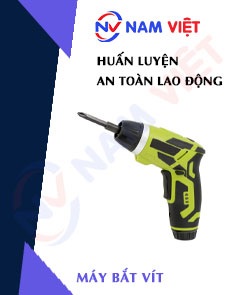
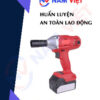
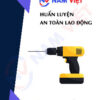







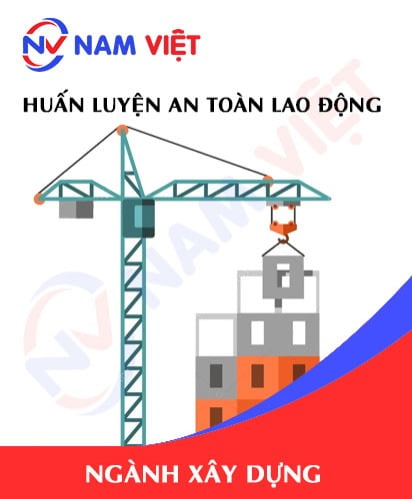
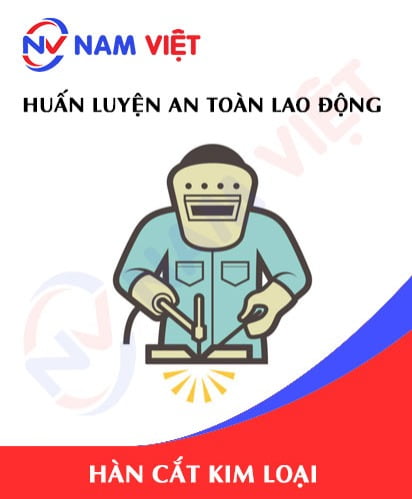


phanminhhang341
Giảng viên dạy rất sinh động dễ hiểu!